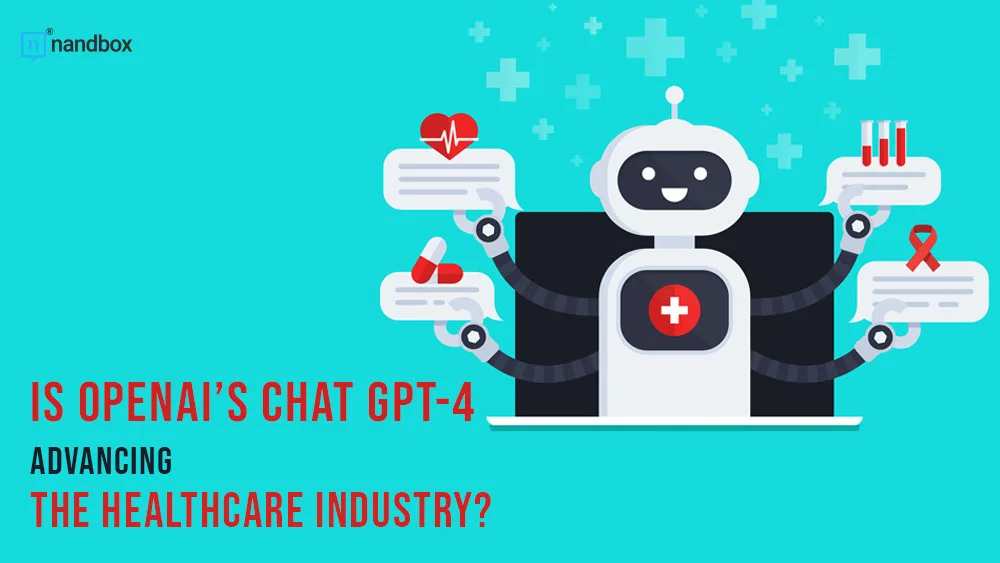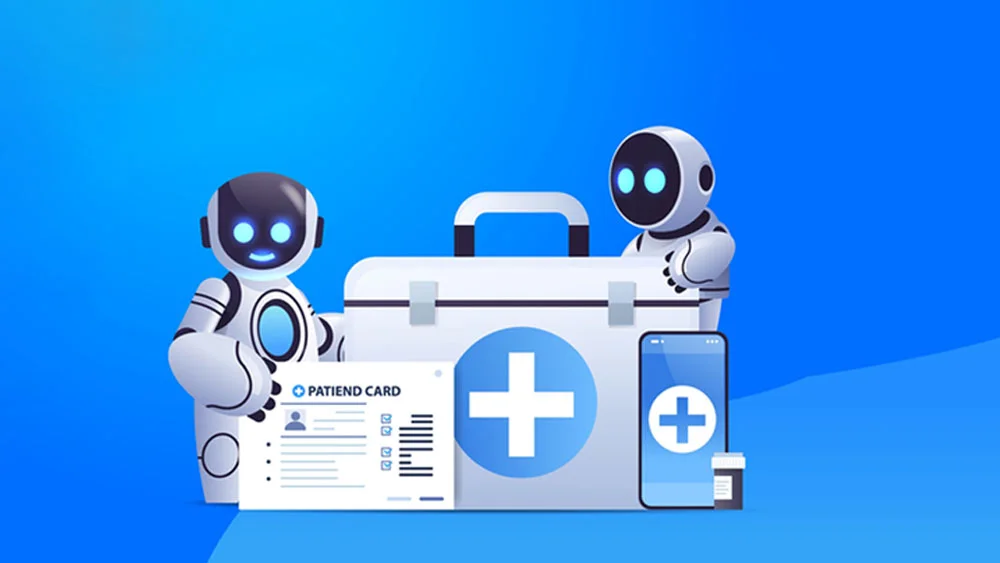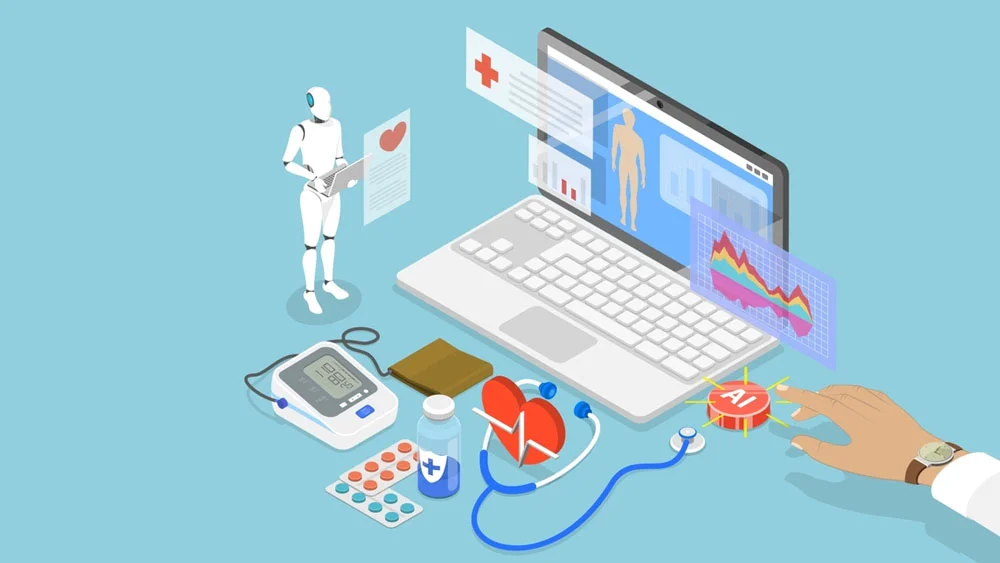Months after OpenAI released chat GPT-3.5, the company introduced the more advanced GPT-4. They have been working on the new installment for years and claim it’s the most advanced system they have released. Since its release, people have been debating whether it’s beneficial or dangerous. We think it can be both. It will revolutionize the workflow in many industries, including healthcare. Let’s explore the applications of GPT-4 in the healthcare industry.
A Quick Introduction to Chat GPT-4
This section will catch you up if you’ve been living under a rock. It’s alright; we’re not judging.
Chat GPT is an AI-generating chatbot. The recently released GPT-3.5 was the most popular product of OpenAI until they followed it with GPT-4. They both run on the language models GPT-3.5 and GPT-4, respectively. Their training involves consuming enormous amounts of text data.
While GPT-3.5 took the world by storm, it still had limitations that left some people unimpressed. The answers were inaccurate half of the time, and there were social and racial biases. The reason behind this is that the chatbot consumed data without filtering it. After all, it’s not a human that knows what’s inappropriate to say. Moreover, 3.5 was limited when it came to creativity and interpretability.
Now, Open AI’s GPT-4 entered the game, and GPT-3 left the chat—only figuratively. The new chatbot might still have biases and hallucinations (wrong information), but it’s still significantly more accurate, much more creative, and smart.
Many industries can utilize Chat GPT-4, including the healthcare industry. Is it a game changer or a threat? Let’s discuss its capabilities in the next section.
An Overview of GPT-4’s Basic Functions
- Answer questions,
- Write long responses or essays,
- Solve equations,
- Write songs or poetry,
- Play games,
- Debug code,
- Solve tests,
- Emulate a Linux System
- Simulate an ATM
- Simulate a Chat Room
Chat OpenAI’s GPT-4 Applications in the Healthcare Sector
Healthcare experts tested Chat GPT-4 to investigate its capabilities. Here are their findings concerning the following practices;
Patient Diagnosis
Using AI in patient diagnosis isn’t a new concept. Medical professionals have been looking to incorporate it to improve diagnosis accuracy. They find GPT-4 promising.
The chatbot can help in medical diagnosis by reading and understanding medical records, analyzing symptoms, and suggesting possible diagnoses.
Because GPT-4 analyzes long texts and generates answers in seconds, it can be more efficient than manual diagnosis methods. Because it’s significantly more accurate than the previous model of ChatGPT, doctors can actually use it in diagnosing patients. And its new feature of image analysis can help in radiology, as it can examine X-rays and scans.
Offering a Treatment Course
Anil Gehi, MD, an associate professor of medicine and cardiologist at the University of North Carolina at Chapel Hill, tested GPT-4, and the result was impressive. The professor provided the chatbot with a patient’s recent symptoms and medical records. He used advanced medical terms to make it a bit harder.
GPT-4 gave the same treatment course that he and other medical professionals would have taken. Upon repeating the process with other patients, the results were still accurate.
With this breakthrough, as tempting as it is to start relying on AI to treat patients, doctors still advise caution and human supervision. After all, Chat GPT-4 is still prone to biases and hallucinations.
Another concern is that the GPT-4 system gets fed patients’ private data, and there’s no telling who gets access to it, which is ethically questionable. OpenAI should apply measures that reassure that patients’ data will remain private.
Improving Patient Comprehension
One of the perks of Chat GPT-4 is that it can simplify complicated language. That can be extremely helpful in the education sector, but medical professionals can also use it. They can insert the medical report, ask the bot to simplify it, and give it to patients. Or they can insert complex medical terms like “dht hormone” and ask for a simple definition. This would help the patient understand their medical case, eliminating the frustration resulting from the inability to comprehend the issue. That way, they can make informed decisions and choose their treatment course.
Medical Education and Training
Patients aren’t the only ones who can benefit from Gpt-4’s summaries. Medical and pharmacy students can also find it helpful. GPT-4 could enhance the efficiency and precision of medical education. It can speed up the review of clinical cases, medical articles, and other resources for medical students and professionals. GPT-4 can also be used to create summaries and reports that surpass the quality of anything a human could write. Medical professionals, not just students, can also benefit from the accelerated learning provided by this technology.
Automating Medical Records and Prescriptions
GPT-4 could streamline much of the tedious administrative tasks currently performed by hand in the medical field. This would allow the doctor more time to devote to patient care, including diagnosis and treatment. In addition, the chatbot has the potential to lessen the prevalence of diagnostic and prescribing blunders resulting from human error. For example, GPT -4 can be used to analyze a customer’s medical records and weight loss history to determine if they’d be a suitable candidate for a Wegovy prescription or a gut health product to assist in their weight loss program. However, the final step would require approval from a healthcare practitioner to determine whether a prescription is suitable.
Patient records and prescriptions could also be automatically generated with the help of GPT-4. Faster and more accurate than humanly possible medical records can now be created with the help of this technology. As a result, doctors may spend less time on administrative tasks and more time caring for patients.
Let’s Conclude
So, Open AI’s GPT-4 can be extremely helpful in the healthcare and medical sector. It can do many functions, from when the patient signs the admission papers to diagnosis, determining a treatment path, to finalizing the paperwork. It’s easy to say that the future of medicine is looking good.
However, there’s always a dark side to any new technology. As we mentioned, patients’ records might get collected and stored in the system, but that’s the least of the concerns. One wrong piece of information or hallucination coming out of Chat GPT-4 could jeopardize a patient’s health. But the chatbot isn’t to blame here, and it doesn’t mean medical professionals shouldn’t use it. But they should do so with uttermost caution. A lot is on the line here.
Rest assured that the nandbox app builder doesn’t store your private data, as we comply with a strict privacy policy. We value our customers and put them first, and our native no-code app builder is proof. You will save your money, time, and effort creating an awesome native app. Try it now!






